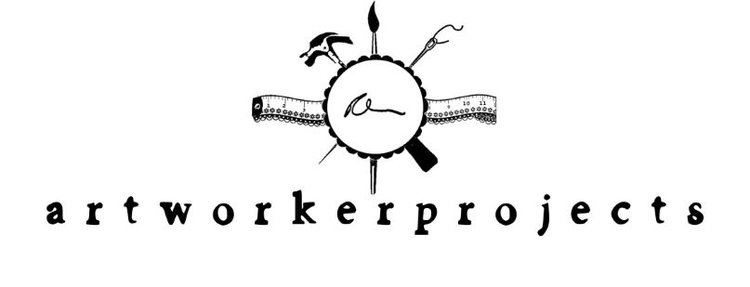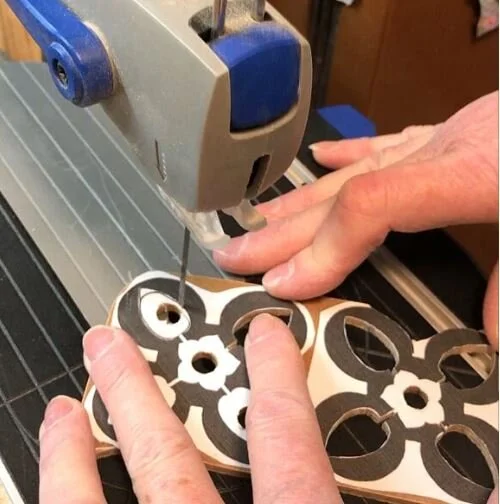I thought I’d dedicate a post in honour of my beautiful Heartsease ornaments
Holman Hunt, The scapegoat, 1854-56, Lady Lever Gallery, Port Sunlight
“‘There are symbols everywhere… Nay, the symbols have overflowed the picture, and expanded themselves all over the frame.’”
I found my Heartsease in the carving on the frame of Holman Hunt’s “The Scapegoat”. Heartsease are a form of the Pansy flower, a symbol of thought, love, peace, humility, devotion, and universality. Pretty general. As will unfold below, my usage of it speaks of comfort, peace and constancy; to console & protect
Although the flower symbol right in the center of the carving is perhaps, strictly speaking, the Heartsease, I responded to the carving around it that creates a cruciform & thence a quatrefoil.
The origin of quatrefoils seems to be unknown but they are probably Islamic in origin. They are omnicultural & seem to be something we just need. There is harmony in symmetry, all four points of the compass
There is no, I repeat no, shortage of quatrefoils in the world.
Edward Burne-Jones (1833-98), The Adoration of the kings & shepherds triptych, second version 1861
My interest sparked because I hadn’t solved an image I wanted to make, I could not satisfactorily balance it & couldn’t let it go when suddenly, I found this information: the attributive frame. The Pre-Raphaelite’s innovative, revolutionary regard of frames as an expansion of pictorial meaning, an essential, attributive factor to the experience of a painting, which suddenly resolved my art puzzle & opened a new dimension that has been pretty thrilling.
Late at night in the studio being thrilled, for real real
When paced on the border of the large scale artwork, their melancholy nature (hearts-ease: for a heart to be at ease, it must not be to begin with) is echoed in the melancholic Latin text seen above- there are tears in all things, they are shed for and of and by, everything. [here].
The two panels of landscape which were planned for the center of this piece would then be contained, sheltered, surrounded by love; held together, encircled, buffeted. The heart is put at ease. That is the nature & function of their work in this piece. My enthusiasm for them, however, is boundless, as you will be shown.
After a fair amount of drafting (so fussy), I refined the shape & scale I required of the ornaments and as always, the physical process of making was immensely enjoyable, every piece lavished with time & attention. Watch the above with charity, please, and remember I made 28 of them. The sanding & filing went on forever but I wanted each piece to be unique. But once I’d completed that 28 piece lot, that changed. My, how it changed
Edges are painted black for definition against the field of gold leaf upon which they’ll be placed, with the centre hole in blood red. It all matters.
But sticking with the 28 Chosen Ones, I used oil size when gilding which I haven’t done in years (acrylic size is nigh-infallible while oil size is a timing thing & can be as unpredictable as the weather). Oil size dries hard & can be sanded while the acrylic-latex is a world of sticky regret. And in fact, having gilded & finished them all, I found them to be slightly flawed & not shiny enough, which wouldn’t do. So I sanded back to base (lucky I used oil size!) and started again. Yes, sorry, re-gild the lot. You’d hate working for me. I have had people working for me. They never said they hated it IN SO MANY WORDS
Process pictures enjoy:
I went from individually created to PUMP THEM OUT, plaster, resin, keep casting forever but read on
To digress:
The large scale artwork you met at the beginning of this tale is comprised of components; boards/ornament/text. Technically, it could be a polyptych; a series of panels or parts where the frame is a meaningful part of the whole. Very Pre Raphaelite.
For the text, I found the PERFECT font, Trajan, but it is terrifically priced to buy outright so Ive drawn it myself & fixed it up digitally, resulting in an artisanal aesthetic which is fine. I made the works above when studying the applications of text/ornament/board and scale to see how it might look on the big piece. Do you want one? They are here
Another late night in the studio, gloating
To continue: I loved those wooden ones so much and having spent so much time on them, I then wanted to immortalise them, take moulds and cast many, so I can always have them. Also because EASIER. So I took silicone moulds and cast many many in plaster and resin. I keep pouring casts, stacking them up in towers of big, medium & small. Compulsively, I was compelled to make more and more, an phenomenon not unfamiliar to me.
Desperate then, for a way to justify the number of them all, I asked myself: what would a Capitalist do? The answer, of course, is: greeting cards. I know right!
…however Commerce did not pan out on this so I now have a stockpile of all the cards anyone is ever going to get from me, this lifetime. Do you want some? They are here and they are darling
Further undeterred, I’m going to make some large pieces, maybe about 400mm diameter & see what they look like.
I was thinking about this and then I remembered…
Max Gimblett! Quatrefoils!
…then I remembered Max Gimblett’s work! I’m so grateful to him for making it, I feel validated in my quatrefoil obsession. I first saw his work at Sydney Contemporary art fair in 2013, as seen above. His aesthetic is familiar; hard lacquer & gold leaf, a painting as an object, sculpture/relief sculpture. See his website here. The colours, patterns and gestures are insane & I love them.
I like mine more cruciform, slightly squeezed inward, vertically compressed & imperfect. And I like my cut outs. Holes punched through, something about travelling in that, like the holes are left by the passage of time. Transitional. More decorative, lace like. And I love the decay of the surface when I embed the metal leaf in the plaster casts. So sculptural and something I want to explore with the larger scale pieces.
It turns out that the world can, indeed, bear more quatrefoils, and they will be mine.
I now see clearly that quatrefoils are eternal entities. Like turbo-charged ouroboros, the eternal cycle of renewal. They’ve travelled from my small framing detail to plans for large scale works, they are so satisfying, they are so complete. Shakespeare wrote of Heartsease flowers, in Hamlet and Midsummer Night’s Dream, as a symbol of thought. For lovers. I think they could substitute for a halo, they’re such discrete energies, equal unto themselves.
In designing them. I made each of the four ‘leaf’ compartments unique, connected but not joined, even though it would’ve saved a lot of time and detail. I didn’t connect them, I wanted them contained.
This meant drilling through each one, poking the saw blade through the hole, cutting out the small, leaf shaped opening, then disconnecting the saw blade to poke it through the next drill hole to cut out the next segment etc. But its important that they’re like this. Protected.
In conclusion, I have found purpose & meaning in this shape.
Max Gimblett says “I had a dream in 1983. It was a quatrefoil. It said ‘paint me and I’ll heal you” and I believe him.
It hasn’t come to me in a dream, I found it instead.

















































